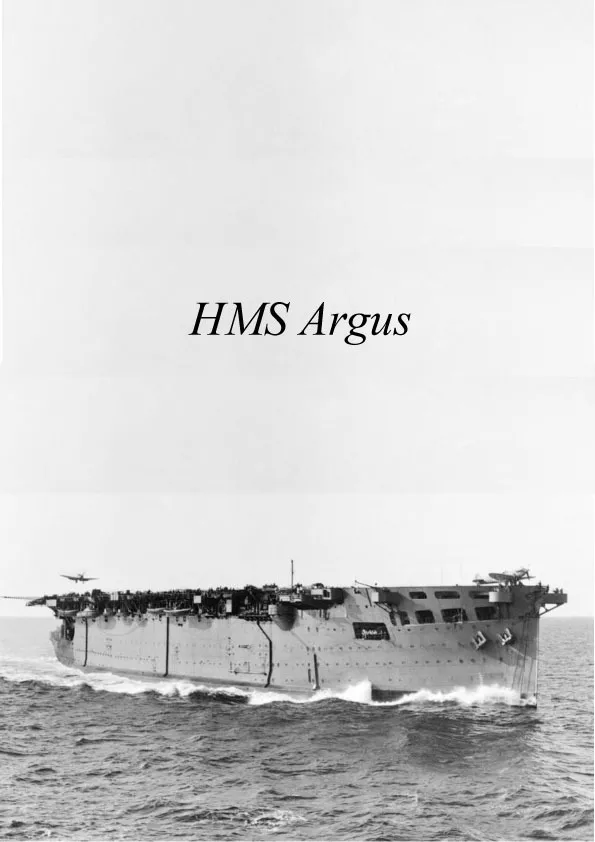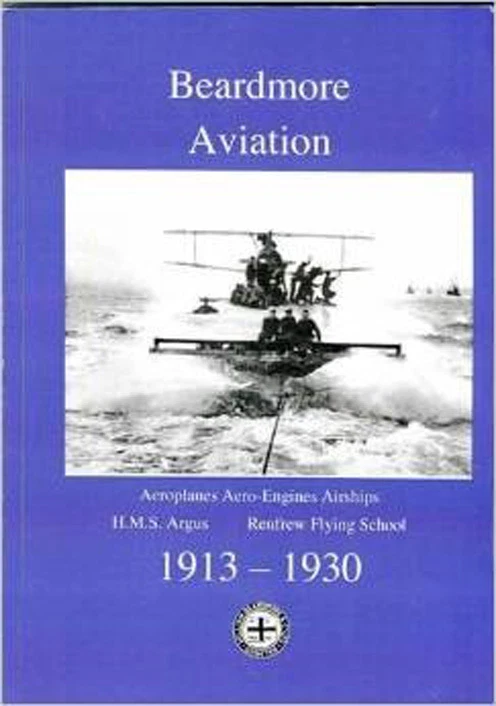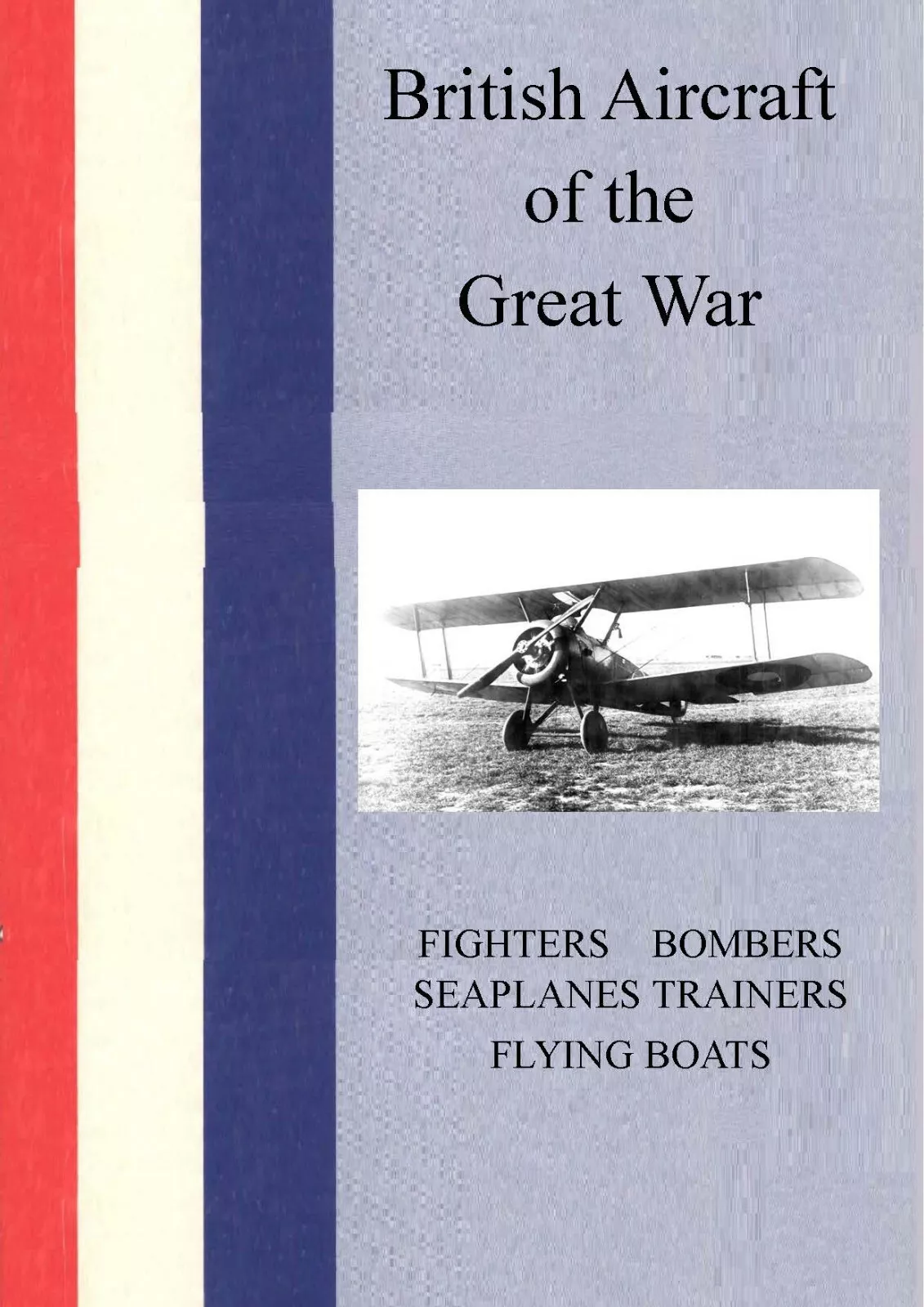Argus established the modern carrier template: clear deck, enclosed hangar, and lift-enabled operations.
Introduction: The Revolutionary Design
HMS Argus (commissioned September 1918) is widely regarded as the first aircraft carrier with a full-length, unobstructed flight deck—a decisive evolution from earlier seaplane carriers and flight-platform ships. Based on comprehensive research documented in Charles E. MacKay's authoritative work Aircraft Carrier - Beardmore's HMS Argus - ex Conte Rosso, this Enhanced Edition presents the complete story of how Argus's revolutionary design transformed naval aviation from experimental concept to practical operational capability. Converted from the incomplete Italian liner Conte Rosso, Argus brought hangar integration, lifts, and flush deck operations together in a single coherent design that established the carrier's essential architecture for the next century.
The book Aircraft Carrier - Beardmore's HMS Argus is a 175-page highly detailed work with 330 illustrations, including restored ship covers, tracing her history and wartime record in the Royal Navy, to her demolition at Inverkeithing in 1947. This comprehensive documentation ensures that HMS Argus's revolutionary design achievements are properly recognized and preserved. The book includes details of commanding officers of the ship and the Fleet Air Arm as well as details of the various operations involving HMS Argus, providing essential context for understanding her design evolution.
Built as the emigrant carrier SS Conte Rosso for the Italian Line Lloyd Sabuado at Dalmuir, Scotland, in 1914, the vessel was ultimately bought by the Admiralty in 1916. She was launched in December 1917 as HMS Argus. By 1918 she was redesigned and sailed in September 1918 for Burntisland for trials with aircraft on the first carrier landings and take-offs with Sopwith aircraft including Pups. This comprehensive documentation demonstrates how HMS Argus's revolutionary design enabled carrier aviation operations that would influence naval warfare for decades.
Understanding HMS Argus's design provides valuable insights into how carrier architecture evolved from experimental concepts to practical operational capability. The comprehensive documentation of her design development ensures that the revolutionary nature of her flush-deck concept is properly understood and preserved. This Enhanced Edition draws on original archive material and official sources to present a complete picture of how HMS Argus's design established principles that continue to guide carrier design worldwide.
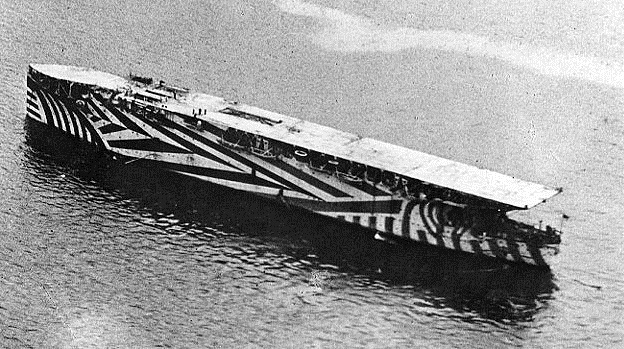
Origins: From Italian Liner to British Carrier
HMS Argus began life as the emigrant carrier SS Conte Rosso for the Italian Line Lloyd Sabuado at Dalmuir, Scotland, in 1914. The vessel's construction at Beardmore's Dalmuir yard demonstrated Scottish shipbuilding excellence and Beardmore's capability to undertake complex maritime construction projects. The comprehensive documentation of this construction in Beardmore Aviation: The Story of a Scottish Industrial Giant's Aviation Activities demonstrates how Scottish industrial capability enabled crucial naval aviation achievements. Understanding Argus's origins provides essential context for appreciating how shipbuilding expertise contributed to carrier development.
The Italian Line's original design for Conte Rosso reflected contemporary emigrant carrier requirements, with accommodation and facilities designed for passenger transport. However, the outbreak of World War I disrupted these plans, and the incomplete vessel remained at Dalmuir as construction halted. The Admiralty's purchase of the vessel in 1916 represented a strategic decision to adapt existing maritime construction for naval aviation purposes. This conversion decision demonstrated how wartime requirements drove innovative solutions to naval aviation challenges.
The vessel's acquisition by the Admiralty reflected recognition that existing ship designs could be adapted for carrier purposes. The comprehensive documentation of this acquisition ensures that the strategic decision-making that led to HMS Argus's development is properly understood. Understanding this acquisition provides valuable insights into how naval aviation requirements drove innovative ship design solutions during the Great War.
The conversion from liner to carrier required fundamental redesign of the vessel's internal arrangements and superstructure. The comprehensive documentation of this conversion process ensures that the engineering challenges and solutions of carrier conversion are properly understood. Understanding conversion challenges provides valuable insights into how maritime engineering adapted existing ship designs for carrier purposes.
The Marquis of Montrose's Revolutionary Concept
HMS Argus stands as the world's true aircraft carrier with a flat deck, this concept being planned by the Marquis of Montrose, a Beardmore director. The Marquis of Montrose's vision for a flush-deck carrier represented a fundamental departure from earlier carrier concepts, which had featured obstructed flight decks with superstructures interfering with aircraft operations. This revolutionary concept eliminated visual and physical obstacles that had hampered earlier carrier operations, enabling continuous flight deck operations and safe aircraft recovery.
The Marquis of Montrose's concept demonstrated how innovative thinking could solve fundamental carrier design challenges. The flush-deck design eliminated the need for pilots to navigate around superstructures during landing approaches, reducing landing complexity and improving safety. This design innovation demonstrated how carrier design could be optimized for aircraft operations rather than traditional ship design considerations. The comprehensive documentation of the Marquis of Montrose's concept ensures that this revolutionary design thinking is properly recognized and preserved.
The comprehensive documentation of Beardmore's role in HMS Argus's development demonstrates how Scottish industrial leadership contributed to naval aviation innovation. The Marquis of Montrose's concept reflected Beardmore's innovative approach to aviation challenges, demonstrating how industrial leadership could drive technological innovation. Understanding the Marquis of Montrose's concept provides valuable insights into how innovative design thinking solved fundamental carrier design challenges.
The flush-deck concept required fundamental rethinking of ship design principles, with navigation, exhaust routing, and wind management requiring innovative solutions. The comprehensive documentation of these design challenges ensures that the engineering innovation required for HMS Argus's design is properly understood. Understanding these design challenges provides valuable insights into how carrier design evolved to optimize aircraft operations.
Conversion and Design Philosophy: Structural Engineering Challenges
Argus's conversion demanded structural re-assessment of the hull, redistribution of mass, and integration of enclosed hangars, lifts, and aviation fuel systems. The conversion from liner to carrier required fundamental changes to the vessel's internal arrangements, with passenger accommodation replaced by hangar space and aviation facilities. This conversion process demonstrated how ship design could be adapted for carrier purposes through careful engineering and structural redesign.
Eliminating a traditional superstructure in favour of a clear deck required innovations in navigation arrangements, exhaust trunking, and wind management—the seeds of later "island" solutions refined on subsequent carriers. The flush-deck design required relocating navigation facilities below deck level, with navigation bridges positioned to provide visibility while maintaining clear flight deck access. This innovative arrangement demonstrated how carrier design could balance ship navigation requirements with aircraft operations needs.
Exhaust trunking represented a critical design challenge, with ship exhaust gases requiring routing to avoid flight deck turbulence and visibility issues. The comprehensive documentation of exhaust routing solutions ensures that the engineering innovation required for flush-deck design is properly understood. Understanding exhaust routing provides valuable insights into how carrier design solved fundamental engineering challenges.
Wind management required careful consideration of flight deck airflow patterns, with flush-deck design eliminating superstructure interference but requiring alternative wind management solutions. The comprehensive documentation of wind management solutions ensures that the aerodynamic considerations of carrier design are properly understood. Understanding wind management provides valuable insights into how carrier design optimized flight deck conditions for aircraft operations.
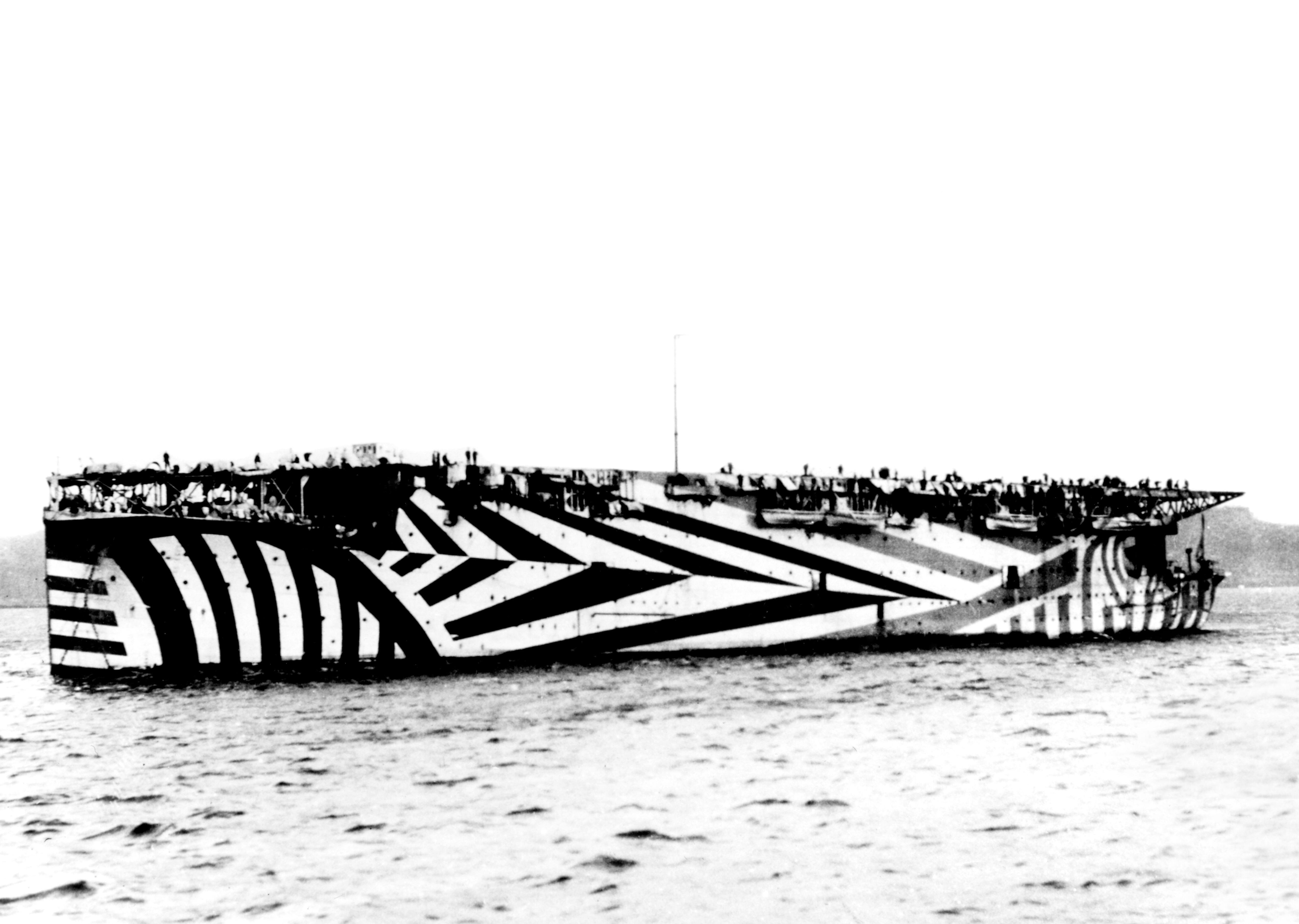
Hangar Integration and Internal Arrangements
The integration of enclosed hangars represented a fundamental advance over earlier carrier designs, which had relied on open-air aircraft storage. HMS Argus's hangar design enabled aircraft protection from weather and sea conditions, while providing space for aircraft maintenance and preparation. The hangar's integration with the flight deck through lifts enabled efficient aircraft movement between hangar and flight deck, essential for operational effectiveness.
Hangar design required careful consideration of aircraft dimensions, maintenance requirements, and operational flow. The comprehensive documentation of hangar design ensures that the engineering considerations of carrier internal arrangements are properly understood. Understanding hangar design provides valuable insights into how carrier internal arrangements were optimized for aircraft operations.
Aircraft lifts represented critical systems enabling aircraft movement between hangar and flight deck. Lift design required careful engineering to ensure reliable operation under sea conditions, with lift capacity and dimensions matched to aircraft requirements. The comprehensive documentation of lift design ensures that the engineering innovation required for carrier operations is properly understood. Understanding lift design provides valuable insights into how carrier systems enabled effective aircraft operations.
Aviation fuel systems required careful integration with ship safety systems, with fuel storage and distribution systems designed to minimize fire risk while enabling efficient aircraft fueling. The comprehensive documentation of fuel system design ensures that the safety considerations of carrier design are properly understood. Understanding fuel system design provides valuable insights into how carrier design balanced operational requirements with safety considerations.
Structural Engineering: Deck Reinforcement and Load Distribution
Flight deck reinforcement for aircraft loads represented a fundamental structural engineering challenge. The flight deck required strength to support aircraft landing impacts, while maintaining structural integrity under sea conditions. Deck reinforcement required careful engineering to ensure adequate strength without excessive weight, balancing structural requirements with ship performance characteristics.
Aperture framing for lift openings required careful structural engineering to maintain hull integrity while enabling aircraft movement. Lift apertures represented structural discontinuities requiring reinforcement to maintain structural strength. The comprehensive documentation of structural engineering solutions ensures that the engineering innovation required for carrier design is properly understood. Understanding structural engineering provides valuable insights into how carrier design solved fundamental structural challenges.
Load distribution required careful consideration of aircraft weights and landing impact forces. The flight deck's structural design needed to distribute loads effectively throughout the ship's structure, ensuring that landing impacts did not compromise hull integrity. The comprehensive documentation of load distribution solutions ensures that the structural engineering considerations of carrier design are properly understood.
Mass redistribution required careful engineering to maintain ship stability and performance characteristics. The conversion from liner to carrier changed the vessel's weight distribution, requiring careful ballasting and structural modifications to maintain acceptable stability characteristics. The comprehensive documentation of mass redistribution ensures that the engineering considerations of carrier conversion are properly understood.
Flight Deck Design: Markings, Lighting, and Safety Systems
Early Argus operations refined deck markings, landing aids, and emerging arresting measures. Flight deck markings enabled pilots to align landing approaches accurately, while deck crews used markings to position aircraft for launch and recovery operations. The comprehensive documentation of deck marking development ensures that the evolution of carrier flight deck procedures is properly understood.
Without the later sophistication of optical landing systems, pilots relied on signals and deck crews to align approaches. Early carrier landing procedures required visual communication between pilots and deck crews, with signal systems enabling safe landing operations. The comprehensive documentation of landing aid development ensures that the evolution of carrier landing procedures is properly understood. Understanding landing aid development provides valuable insights into how carrier operations evolved from experimental to routine procedures.
Experiments with fore-aft wires and barriers informed later, standardized arresting gear. Early arresting systems represented experimental approaches to aircraft recovery, with fore-aft wires and barriers providing means to stop landing aircraft safely. The comprehensive documentation of arresting gear development ensures that the evolution of carrier recovery systems is properly understood. Understanding arresting gear development provides valuable insights into how carrier recovery systems evolved from experimental to standard equipment.
The full-length deck allowed simultaneous staging, clearing, and recovery cycles unachievable on obstructed layouts. The flush-deck design enabled continuous flight deck operations, with aircraft launch and recovery operations proceeding simultaneously. This operational flexibility demonstrated how flush-deck design enabled superior operational effectiveness compared to obstructed deck designs. The comprehensive documentation of operational advantages ensures that HMS Argus's design superiority is properly recognized.
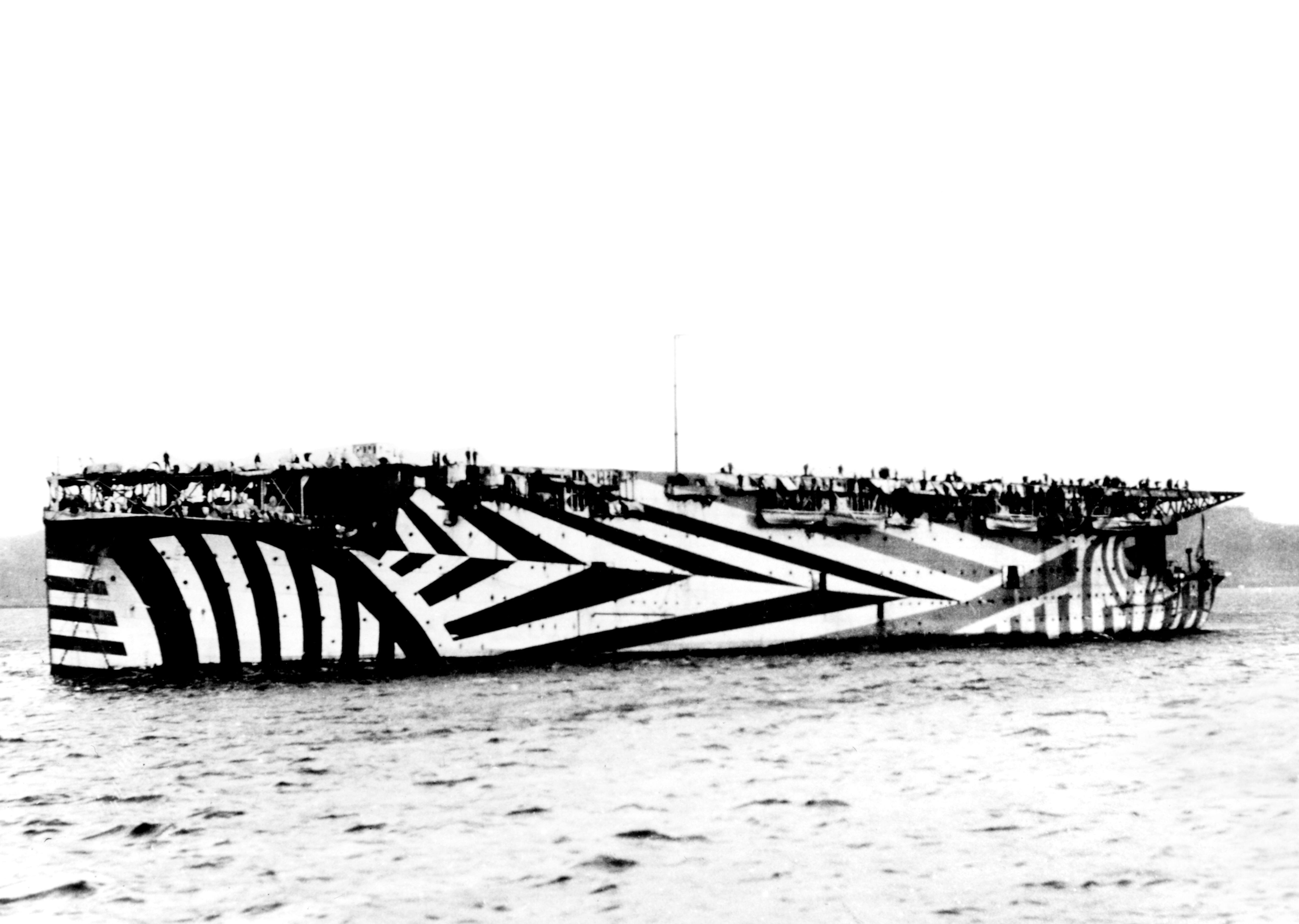
Deck Handling Doctrine and Procedures
Deck handling doctrine emerged: dedicated teams for chocking, manhandling, and spotting; standard tow-points and lashings; and safety protocols for props, intakes, and exhausts. The human choreography—positioning, signalling, and communication—proved as decisive as hardware. The comprehensive documentation of deck handling doctrine ensures that the evolution of carrier operational procedures is properly understood.
Dedicated teams for chocking, manhandling, and spotting enabled efficient aircraft movement on the flight deck. Deck crews developed specialized procedures for aircraft positioning, with chocking teams securing aircraft in position while manhandling teams moved aircraft to launch positions. The comprehensive documentation of deck handling procedures ensures that the human factors of carrier operations are properly understood. Understanding deck handling procedures provides valuable insights into how carrier operations depended on coordinated human action.
Standard tow-points and lashings enabled systematic aircraft movement and securing procedures. Standardized equipment and procedures enabled efficient deck operations, with tow-points and lashings designed to enable safe aircraft movement and secure storage. The comprehensive documentation of standardized procedures ensures that the systematic approach to carrier operations is properly understood.
Safety protocols for props, intakes, and exhausts protected personnel from aircraft hazards during deck operations. Aircraft propellers, intakes, and exhausts represented significant hazards requiring careful safety procedures. The comprehensive documentation of safety procedures ensures that the safety considerations of carrier operations are properly understood. Understanding safety procedures provides valuable insights into how carrier operations balanced operational effectiveness with personnel safety.
Propulsion Integration: Exhaust Routing and Wind Management
Propulsion integration required exhaust routing to minimize deck turbulence and visibility issues. Ship exhaust gases required careful routing to avoid flight deck interference, with exhaust trunking systems designed to route gases away from flight deck operations. The comprehensive documentation of exhaust routing solutions ensures that the engineering innovation required for flush-deck design is properly understood.
Exhaust routing represented a critical design challenge, with ship exhaust gases requiring routing to avoid flight deck turbulence and visibility issues. The flush-deck design eliminated superstructure exhaust routing, requiring alternative exhaust arrangements. The comprehensive documentation of exhaust routing solutions ensures that the engineering innovation required for flush-deck design is properly understood. Understanding exhaust routing provides valuable insights into how carrier design solved fundamental engineering challenges.
Wind management required careful consideration of flight deck airflow patterns. The flush-deck design eliminated superstructure interference but required alternative wind management solutions. The comprehensive documentation of wind management solutions ensures that the aerodynamic considerations of carrier design are properly understood. Understanding wind management provides valuable insights into how carrier design optimized flight deck conditions for aircraft operations.
Propulsion system integration required careful coordination between ship propulsion and aircraft operations. Ship propulsion systems needed to provide adequate power for ship operations while minimizing interference with flight deck operations. The comprehensive documentation of propulsion integration ensures that the engineering considerations of carrier design are properly understood.
Dazzle Camouflage and Maritime Survivability
Argus's dazzle schemes reflected contemporary anti-submarine practice, breaking up the ship's form to mislead U-boat observers on course and speed. Dazzle camouflage represented an innovative approach to ship protection, using geometric patterns to disrupt visual rangefinding. The comprehensive documentation of dazzle camouflage ensures that the protective measures employed on HMS Argus are properly understood.
Carrier survivability was addressed through compartmentation, fire main coverage, aviation fuel protection, and good damage-control access—principles carried forward across the inter-war Royal Navy. HMS Argus's design incorporated multiple protective measures to enhance survivability, with compartmentation limiting damage spread, fire main coverage enabling firefighting, and aviation fuel protection minimizing fire risk. The comprehensive documentation of survivability features ensures that the protective design considerations of HMS Argus are properly understood.
Fire main coverage enabled firefighting throughout the ship, with fire main systems providing water for firefighting operations. Aviation fuel protection required careful design to minimize fire risk while enabling efficient aircraft fueling. The comprehensive documentation of fire protection systems ensures that the safety considerations of carrier design are properly understood.
Damage-control access enabled effective damage control operations, with access routes designed to enable rapid response to damage. The comprehensive documentation of damage-control features ensures that the survivability considerations of carrier design are properly understood. Understanding damage-control features provides valuable insights into how carrier design balanced operational requirements with survivability considerations.

Comparison with Contemporaries: French Foudre and Early Carriers
The book includes details of the French seaplane vessel Foudre, providing comparative context for understanding HMS Argus's revolutionary design. Foudre represented an earlier approach to naval aviation, using seaplanes rather than land-based aircraft. HMS Argus's full-length flight deck represented a fundamental advance over seaplane carrier concepts, enabling operation of land-based aircraft with superior performance characteristics.
Early carriers with obstructed flight decks could not match HMS Argus's operational flexibility. Obstructed deck designs featured superstructures interfering with flight deck operations, limiting operational effectiveness. HMS Argus's flush-deck design eliminated these limitations, enabling superior operational capability. The comprehensive documentation of comparative advantages ensures that HMS Argus's design superiority is properly recognized.
The comparison with Foudre demonstrates how HMS Argus's flush-deck design provided superior capabilities for aircraft operations. Seaplane carriers required aircraft to operate from water, limiting aircraft performance and operational flexibility. HMS Argus's flush-deck design enabled land-based aircraft operations, providing superior aircraft performance and operational capability. The comprehensive documentation of this comparison ensures that HMS Argus's revolutionary design is properly understood.
Understanding comparative design approaches provides valuable insights into how carrier design evolved from experimental concepts to practical operational capability. The comprehensive documentation of design comparisons ensures that HMS Argus's contribution to carrier design evolution is properly recognized. Understanding design evolution provides valuable insights into how carrier architecture developed from early experiments to modern carriers.
Beardmore Industrial Context: Scottish Shipbuilding Excellence
HMS Argus was built at Dalmuir, Scotland, demonstrating how Scottish shipbuilding excellence contributed to carrier development. The Marquis of Montrose, a Beardmore director, planned the carrier concept, demonstrating how Scottish industrial leadership contributed to naval aviation innovation. The comprehensive documentation of Beardmore's role ensures that Scottish contributions to carrier development are properly recognized.
For comprehensive coverage of Beardmore's aviation interests, see Beardmore Aviation: The Story of a Scottish Industrial Giant's Aviation Activities, which provides detailed analysis of Beardmore's contributions to aviation development. Beardmore's role in HMS Argus's development demonstrates how Scottish industry contributed to naval aviation innovation. The comprehensive documentation of Beardmore's contributions ensures that Scottish industrial achievements are properly recognized.
The construction of HMS Argus at Dalmuir represented Scottish shipbuilding capabilities at their finest. The comprehensive documentation of this construction ensures that Scottish industrial contributions to carrier development are properly preserved. Understanding Beardmore's role provides valuable insights into how Scottish industry contributed to naval aviation development.
The comprehensive documentation of Scottish industrial contributions demonstrates how regional manufacturing capabilities supported national naval aviation requirements. Understanding regional contributions provides valuable insights into how Britain mobilized its industrial base for naval aviation development. The comprehensive documentation of regional manufacturing ensures that the industrial foundations of naval aviation development are properly understood.
Influence on Later Carriers: Establishing the Template
Although inter-war designs added islands, heavier arresting gear, armour, and improved aviation fuel protection, the Argus template—hangar + lifts + clear deck—underpinned Hermes, Eagle, and the armoured-deck carriers that followed. HMS Argus demonstrated that carriers are systems of systems: ship design, aviation engineering, doctrine, and training must be engineered together. The comprehensive documentation of HMS Argus's influence ensures that her contribution to carrier design evolution is properly recognized.
The Argus template established fundamental principles that continue to guide carrier design worldwide. Full-length flight decks, internal hangars, aircraft lifts, and systematic deck operations all trace their origins to HMS Argus's design. The comprehensive documentation of this template ensures that HMS Argus's foundational contribution to carrier design is properly preserved. Understanding the Argus template provides valuable insights into how carrier architecture evolved from experimental concepts to standard design principles.
The Argus carrier concept was also incorporated into H.M.S. Audacity, and Audacity's plans were given to the U.S. Navy and resulted in the C.V. USS Long Island, resulting in the jeep carriers of WW2. This demonstrates HMS Argus's influence on subsequent carrier development internationally. The comprehensive documentation of this influence ensures that HMS Argus's contribution to international carrier development is properly recognized. Understanding this influence provides valuable insights into how British carrier design influenced international carrier development.
Modern aircraft carriers continue to incorporate principles established by HMS Argus: full-length flight decks, internal hangars, aircraft lifts, and systematic deck operations. The comprehensive documentation of these continuities ensures that HMS Argus's contribution to carrier design is properly preserved. Understanding these continuities provides valuable insights into how carrier design principles were established and maintained.

Technical Specifications and Design Details
Structural considerations included deck reinforcement for aircraft loads and aperture framing for lift openings. Deck reinforcement required careful engineering to ensure adequate strength for aircraft landing impacts, while aperture framing maintained hull integrity while enabling aircraft movement. The comprehensive documentation of structural engineering ensures that the engineering innovation required for carrier design is properly understood.
Propulsion integration required exhaust routing to minimize deck turbulence and visibility issues. Exhaust trunking systems routed ship exhaust gases away from flight deck operations, minimizing interference with aircraft operations. The comprehensive documentation of propulsion integration ensures that the engineering considerations of carrier design are properly understood.
Hangar safety required fire main reach, foam compound access, and vent isolation. Fire protection systems enabled effective firefighting throughout the hangar, while vent isolation systems prevented fire spread. The comprehensive documentation of hangar safety systems ensures that the safety considerations of carrier design are properly understood.
Aircraft support systems included tie-down points, power carts, and standardized tow eyes. These systems enabled efficient aircraft movement and securing procedures, essential for operational effectiveness. The comprehensive documentation of aircraft support systems ensures that the operational considerations of carrier design are properly understood.
Modern Legacy and Enduring Influence
HMS Argus's influence extends far beyond her operational service. Her flush-deck design established the fundamental architecture for aircraft carriers worldwide. Modern aircraft carriers continue to incorporate principles established by HMS Argus: full-length flight decks, internal hangars, aircraft lifts, and systematic deck operations. The comprehensive documentation of her influence ensures that HMS Argus's contribution to carrier development is properly recognized.
The procedures developed on HMS Argus continue to influence carrier operations worldwide. Deck landing techniques, aircraft handling procedures, and flight deck operations all trace their origins to HMS Argus's pioneering operations. The comprehensive documentation of these procedures ensures that HMS Argus's contribution to carrier operations is properly recognized. Understanding HMS Argus's legacy provides valuable insights into how foundational principles guide long-term development.
The principles established through HMS Argus's design continue to guide carrier design worldwide. Full-length flight decks, internal hangars, aircraft lifts, and systematic deck operations all represent principles established by HMS Argus. The comprehensive documentation of these principles ensures that HMS Argus's foundational contribution to carrier design is properly preserved. Understanding HMS Argus's principles provides valuable insights into how foundational design concepts guide long-term development.
As we look back on HMS Argus's revolutionary design, her contributions to carrier architecture remain fundamentally important. The principles established through her design continue to guide carrier design worldwide, demonstrating the enduring significance of foundational design concepts. HMS Argus's legacy is preserved not only in historical records but in every modern aircraft carrier that incorporates the concepts she pioneered.
Conclusion: The Foundations of Carrier Design
HMS Argus proved the viability of the modern aircraft carrier: a clear flight deck, internal hangar, and lift-enabled flow. More than a ship, Argus was a systems demonstration that fused shipbuilding, aviation engineering, and operational art. The comprehensive documentation provided in Charles E. MacKay's Aircraft Carrier - Beardmore's HMS Argus - ex Conte Rosso ensures that this remarkable story is preserved for future generations.
The lineage of every fleet carrier traces to the template she established. HMS Argus's flush-deck design, internal hangar, and lift systems established fundamental principles that continue to guide carrier design worldwide. The comprehensive documentation of HMS Argus's design ensures that her foundational contribution to carrier architecture is properly recognized and preserved.
Understanding HMS Argus's design provides valuable insights into how carrier architecture evolved from experimental concepts to practical operational capability. The comprehensive documentation of her design development ensures that the revolutionary nature of her flush-deck concept is properly understood and preserved. HMS Argus's design achievements remain fundamentally important for understanding carrier development and continue to influence carrier design worldwide.
As we look back on HMS Argus's revolutionary design, her contributions to carrier architecture remain fundamentally important. The principles established through her design continue to guide carrier design worldwide, demonstrating the enduring significance of foundational design concepts. HMS Argus's legacy is preserved not only in historical records but in every modern aircraft carrier that incorporates the concepts she pioneered.
Further Reading and Related Works
For comprehensive coverage of HMS Argus and related topics, explore these authoritative works by Charles E. MacKay:
- Aircraft Carrier - Beardmore's HMS Argus - ex Conte Rosso — The definitive 175-page work with 330 illustrations, including restored ship covers, tracing her history and wartime record in the Royal Navy, covering design development, conversion process, operational history, and her demolition at Inverkeithing
- Beardmore Aviation: The Story of a Scottish Industrial Giant's Aviation Activities — Comprehensive coverage of Beardmore's aviation interests and HMS Argus's construction
- British Aircraft of the Great War — Contextual reference for aircraft types operated from HMS Argus
- Clydeside Aviation Volume One: The Great War — Scottish industrial underpinning for naval aviation work
- HMS Argus Operations: Pioneering Carrier Aviation Techniques — Detailed analysis of HMS Argus's operational history
- Naval Aviation History: From Seaplanes to Supercarriers — The broader context of naval aviation development
- Beardmore Aviation: Scottish Industrial Giant — The industrial context of HMS Argus's construction
Related Articles
- HMS Argus Operations: Pioneering Carrier Aviation Techniques — Detailed analysis of operational history
- Naval Aviation History: From Seaplanes to Supercarriers — The broader context of naval aviation
- Beardmore Aviation: Scottish Industrial Giant — The industrial context of construction
References
- HMS Argus (D49) - Service History — Naval-History.net
- HMS Argus | Royal Navy Aircraft Carriers — Imperial War Museums
- The Aircraft Carrier HMS Argus — British Pathé (archival film)
